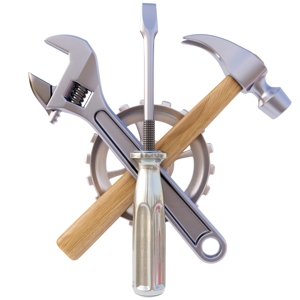Quality Learning Tools
 Tools are usually physical or procedural instruments used to achieve a specific purpose. A tape measure, saw and hammer are examples of physical instruments used to construct a house. A shopping list is a procedural tool, used for shopping. Most quality improvement tools are procedural instruments.
Tools are usually physical or procedural instruments used to achieve a specific purpose. A tape measure, saw and hammer are examples of physical instruments used to construct a house. A shopping list is a procedural tool, used for shopping. Most quality improvement tools are procedural instruments.
It is important to remember that improvement tools are tools. They exist to serve an overall purpose and to provide efficient and effective methods to achieve desired outcomes. They are not ends in themselves.
Many are very simple to use.
Thank you for re-invigorating me - giving me the strength and courage
and providing us with the tools to change the world, at our school anyway!
Roz Lambert, Principal, Arawang Primary School, ACT
The use of quality improvement tools can be traced back to Japanese industry in the 1960s. The first tools, known as the seven basic tools of quality, included: the Fishbone Diagram, Check Sheet, Pareto Chart, Histogram, Correlation Chart, Control Chart and Flow Chart. Other management tools were refined, also in Japan, in the 1970s. These included: the Affinity Diagram, Interrelationship Digraph, and Tree Diagram. Today, many more tools have been developed and continue to be applied to improve quality.
We have found all of the quality improvement tools to be relevant, to varying degrees, in an educational context, from classroom to system levels. There are also additional tools that have been developed to specifically improve the quality of learning.
We call this suite of improvement tools the Quality Learning Tools.
To learn more about Quality Learning Tools, purchase our book Improving Learning or a copy of one of the popular Tool Time books.
